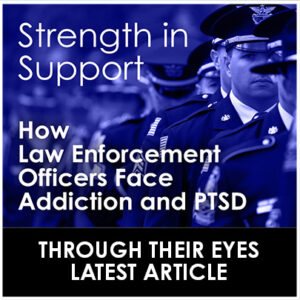While meth abuse does not usually occur during active duty thanks to drug testing, service personnel often turn to it to cope with PTSD due to the way it induces feelings of pleasure via a higher dopamine rush than even cocaine.
Meth is a dangerous combination of being highly addictive within one dose and more affordable than other drugs. It is equally dangerous since users take it over a series of days, staying high for long periods of time. This develops a tolerance, leading to the perceived need for higher doses.
Withdrawal symptoms include anxiety, insomnia, fatigue and depression, which often causes a rebound of binging due to the level of craving for another high. Recovery rates are low without therapy or treatment.
What is meth?
Methamphetamine is a white crystalline drug that people take by snorting, smoking or injecting. It creates a strong desire to continue use since it creates a false sense of happiness and well-being, then a rush of confidence and energy. It also decreases appetite.
Its highs generally last from six to eight hours, but can last up to 24 hours. It begins as a stimulant to the central nervous systems then systemically destroys the body by craving higher doses due to the dopamine-induced high that are unsustainable.
Consequently, it is one of the hardest drug addictions to treat.
Ultimately, it causes aggression, psychotic behavior and damage to the heart and brain.
Signs of Meth Use Among Active Military, Veterans, and First Responders
Some of the the signs of Meth use and addiction including physical and psychological symptoms:
• Rotting teeth (meth mouth)
• Intense scratching
• Thinning body
• Acne or sores
• Paranoia
• Irritability
• Confusion
• A dramatic increase in body temperature
• Increased libido
• A droopy quality to the facial skin
Long term use can also result in several symptoms of meth abuse that could affect the wellbeing of your health and wellness and ultimately result in serious health problems. These include:
• Convulsions
• Liver damage
• Stroke
• Lowered immunity/susceptibility to infectious disease
• Significant anxiety
• Insomnia
• Mood disturbances, and violent behavior
• Visual and auditory hallucinations
• Delusions (such as the sensation of insects creeping under the skin)
• Deficits in thinking and motor skills
• Increased distractibility
• Death
Trying to stop meth use often results in a rebound where users experience intense cravings for the drug and anxiety if they cannot secure it. They crash for a few days, then experience weeks of debilitating and painful withdrawal, seeking them to return to using this drug.
Meth use alters brain structures involved in decision-making and impairs the ability to suppress habits, such as obsessive scratching. These changes in brain structure and function could explain why this addiction is so hard to treat and has a significant chance of relapse early in treatment.
Much of this damage can be overcome if the user stop using meth for two years, without relapse.
By the time many users realize the extent of their problem and try to quit, they find the withdrawal effects are too powerful to overcome on their own. They require a medical detox program that treats symptoms and removes the drug from the body. Once detox ends, recovering users can seek counseling and other services to learn how to maintain long-term sobriety.
Recognizing the meth abuse symptoms allows for loved ones to give the care and attention they need before addiction takes their life away through an overdose.







